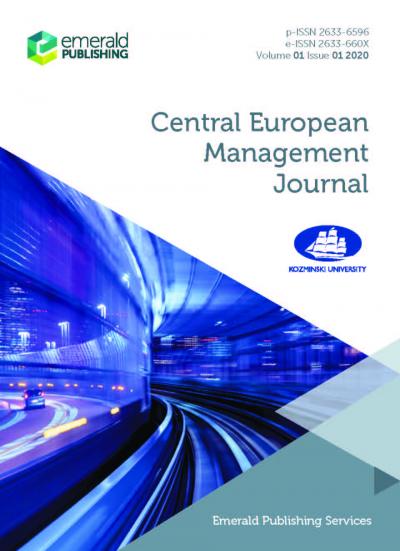The Impact of Standardised fiscal rules index on the Yield on Ten-Year Government Bonds in the Visegrád Group Countries in 2005–2016
Marta Postuła
University of Warsaw

Jarosław Klepacki
University of Social Sciences
Agnieszka Alińska
Warsaw School of Economics
2018 26 (3) Central European Management Journal
DOI 10.7206/jmba.ce.2450-7814.325








